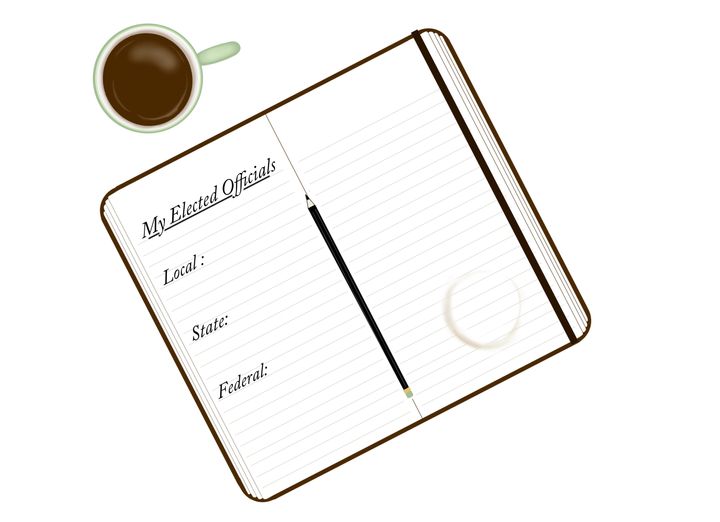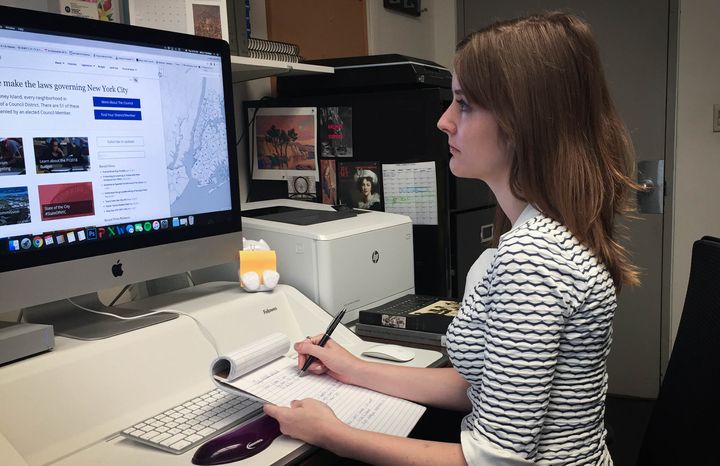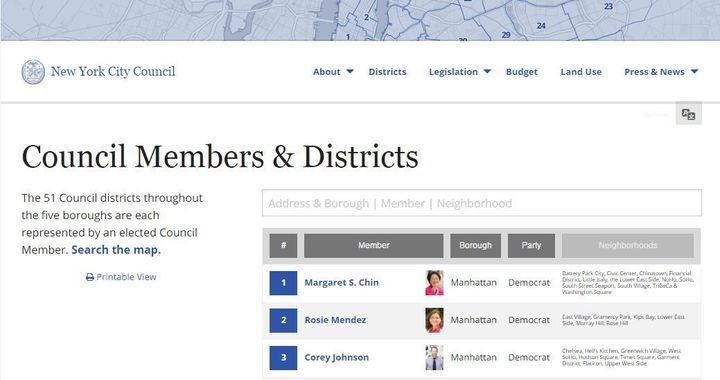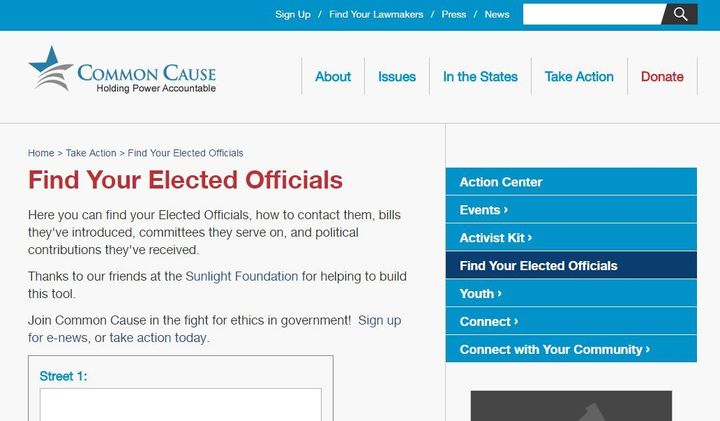
All illustrations for this series are by NYC-based artist Dorothee Pierrard.
This article is part of a series by Jennie Romer entitled How to Get Active in Local Politics. This is Part One.
Get to Know Your Elected Officials
The importance of getting to know your elected officials is true for all levels of government, from your Senator to your state and local officials. The focus here is on local officials because your voice and vote matter more in smaller constituencies and local officials are often more likely to be responsive. Having name recognition with your elected officials can be incredibly helpful when you want to weigh in on legislation or other matters before them. If you’ve already been in contact with them, you’re more likely to have contact information of an aide that recognizes your name and you’ll likely have an easier time scheduling a meeting or phone call to talk about your issue. Your goal should be to make yourself known as an active constituent that votes and has a voice in your community.
Get to know your elected officials before there’s an issue that you care about pending before them. Get to know them right now. The first step is to get to know who your elected officials are — and to register to vote if you haven't already.
Register to Vote
Elected officials care about getting re-elected. That’s worth repeating: Elected officials really care about getting re-elected. For that reason, the people that elected officials are most responsive to are constituents, meaning people that live within their district boundaries. This is especially true for constituents that are registered to vote and consistently show up to vote on election day. Even more deference is given to active community members and campaign contributors. Not everyone is eligible to register to vote, but if you’re eligible to vote and if you want to be even the least bit active in local politics you should register. Also, it’s important to register where you currently live so that you can vote for your local elected officials and have a voice in other issues in your community.
Which party you register with is very important in some places. Many states, including New York, have closed primaries. A closed primary means that you can only vote on your party’s ticket for the primary election. In many jurisdictions one party is so dominant that elections for elected officials are essentially decided at the primary level. For example, in some parts of Brooklyn the Democratic Party is so dominant that in practice all local elected officials are chosen by registered Democrats in the Democratic primary. This happens because the Democrat that’s elected in the primary in those districts always goes on to win the general election. Voters registered to other parties do not participate in the Democratic Party primary and therefore, in those districts, do not have a real say in electing their representatives. This is something that should be looked into and taken into account when deciding which box to check for the political party on your voter registration form. (Full disclosure: I’m a Democrat and an active member of New Kings Democrats, a progressive Democrat club in Brooklyn.)
The next important step is to vote in all elections, including local elections. The national voter turnout rate is currently around 60% for U.S. Presidential elections and 40% for midterm elections, which is among the lowest in developed countries. The voter turnout rates for local elections in the U.S. is around 15% for mayoral races in large cities and even lower in many local non-mayoral races. Local elections tend to be off-cycle from federal elections, meaning that local elections they’re on a different day and only the most diligent voters show up at the polls. Only 6.2% of eligible voters showed up to the polls for the 2013 runoff for NYC’s Public Advocate. Only 4% of eligible voters showed up at the polls for the 2016 primary for a Brooklyn Congressional seat. Be one of the few people that shows up on the primary election day for the state and local elected officials. The low voter turnout for those races makes your vote very valuable.

Brooklyn resident Molly Schoen looks up her new elected officials after a recent move.
Figure Out Who Your Local Elected Officials Are
Now it’s time to figure out who your elected officials are and do a little research about them.
Your local elected representative usually means city council, but if you live outside of a city your located elected official might be your county supervisor or town alderman. For simplicity, I’ll refer to local elected officials as city council members for the remainder of this series unless a distinction is needed. To find your city council member, go to your local municipal (meaning city or town) website and look for a link that says “Find your Council Member” or something similar, then type in your address when prompted. The result should list the name and district number of your city council member and you should write that down. There’s usually an “about” page for each city council member that lists their party affiliation and describes their background, what committees they’re on, and the issues they’re focused on. There’s also probably a map of their district. Look at the map and see what other neighborhoods aside from your neighborhood your city council member represents.
When reviewing your city council member’s background and the issues that they care about, make a few notes on any overlap, or distinct lack of overlap, with issues that you care about. I also suggest Googling your city council member to look for anything that got them in the news and to look at their Wikipedia page if they have one. I’ve found that Wikipedia pages often provide a more balanced description of politicians’ accomplishments and controversies. Make more notes about what you find. Don’t feel like you have to write a lot of notes, but at a bare minimum write at least three descriptive words of phrases that you associate with the person. For example, for my city council member I might write: affordable housing, garbage trucks, co-chair of the progressive caucus.

New York City Council website: If you live in NYC, type your address into the box to find out which council district you live in.
Figure Out Who Your State and Federal Elected Officials Are
Next, look up your state and federal elected officials. For a list of your state and federal elected officials I suggest going to the Common Cause website and entering your address. The website will then display all of your federal and state elected officials with their photos and links to their home pages. (Spoiler alert: You’ll have to first scroll past photos of the current President and Vice President.)
State legislatures are bicameral (except Nebraska), meaning that they’re made up of two chambers: a smaller upper house (the state Senate) and a larger lower house (usually called the House of Representatives or the Assembly). Each state representative has their own district. The state Senate district is larger than that Assembly district. Look at the maps of each district and compare them to each other and to your city council district. Make a few notes about each of your state elected officials again including at least three descriptive words of phrases that you associate with the person.
Repeat this research process for your federal representatives. Your Congressmember represents a specific district in your state. Look at the map of your Congressional district and see how that maps overlaps with your state and local districts. Your two federal Senators both represent your whole state. Senators are known as the junior or senior Senator for your state depending on how long they’ve been in office. Make a few notes about each of your federal elected officials again including at least three descriptive words or phrases that you associate with the person.
Now you should have a list that includes your city council member, plus your two state and three federal legislators. Your list should include your district numbers, their names and positions, their party affiliation, and notes on what stood out to you about them. The district numbers are good to be aware of because someone at a community meeting might ask you which district you’re in and being able to say something like “Assembly district 54” is a quick indicator that you’re politically aware and active. Pair that with your notes about each elected official and you’re primed to meaningfully partake in a conversation about local politics. You can research other elected officials, like your city controller or school board chair, but what you have so far should be more than enough to start. You probably know way more about your elected officials than most of your neighbors at this point.
This article is part of a series by Jennie Romer entitled How to Get Active in Local Politics. This is Part One, click here for Part Two.

Common Cause website: Type your address into the boxes to find out who your state and federal elected officials are.
